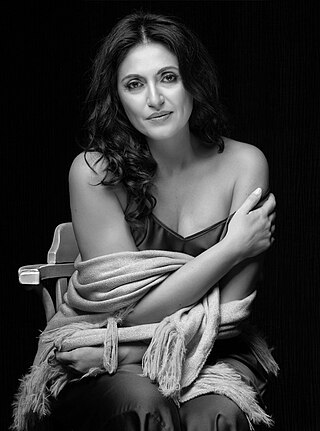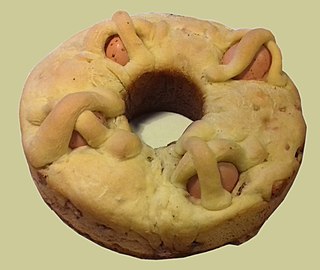Related Research Articles

"Cinderella", or "The Little Glass Slipper", is a folk tale with thousands of variants that are told throughout the world. The protagonist is a young girl living in forsaken circumstances that are suddenly changed to remarkable fortune, with her ascension to the throne via marriage. The story of Rhodopis, recounted by the Greek geographer Strabo sometime between 7 BC and 23 AD, about a Greek slave girl who marries the king of Egypt, is usually considered to be the earliest known variant of the Cinderella story.
This article contains information about the literary events and publications of 1634.

La Cenerentola, ossia La bontà in trionfo is an operatic dramma giocoso in two acts by Gioachino Rossini. The libretto was written by Jacopo Ferretti, based on the libretti written by Charles-Guillaume Étienne for the opera Cendrillon with music by Nicolas Isouard and by Francesco Fiorini for Agatina, o la virtù premiata with music by Stefano Pavesi. All these operas are versions of the fairy tale Cendrillon by Charles Perrault. Rossini's opera was first performed in Rome's Teatro Valle on 25 January 1817.

Neapolitan is a Romance language of the Italo-Romance group spoken in Naples and most of continental Southern Italy. It is named after the Kingdom of Naples, which once covered most of the area, since the city of Naples was its capital. On 14 October 2008, a law by the Region of Campania stated that Neapolitan was to be protected.

Giambattista Basile was an Italian poet, courtier, and fairy tale collector. His collections include the oldest recorded forms of many well-known European fairy tales. He is chiefly remembered for writing the collection of Neapolitan fairy tales known as Il Pentamerone.

The Pentamerone, subtitled Lo cunto de li cunti, is a seventeenth-century Neapolitan fairy tale collection by Italian poet and courtier Giambattista Basile.
Canzone napoletana, sometimes referred to as Neapolitan song, is a generic term for a traditional form of music sung in the Neapolitan language, ordinarily for the male voice singing solo, although well represented by female soloists as well, and expressed in familiar genres such as the love song and serenade. Many of the songs are about the nostalgic longing for Naples as it once was. The genre consists of a large body of composed popular music—such songs as "'O sole mio"; "Torna a Surriento"; "Funiculì, Funiculà"; "Santa Lucia" and others.

"Petrosinella" is a Neapolitan literary fairy tale, written by Giambattista Basile in his collection of fairy tales in 1634, Lo cunto de li cunti, or Pentamerone.

Maria Carta was a Sardinian folk music singer-songwriter. She also performed in film and theatre. In 1975 she wrote a book of poetry, Canto rituale.
Theatres for diverse musical and dramatic presentations began to open in Naples, Italy, in the mid-16th century as part of the general Spanish cultural and political expansion into the kingdom of Naples, which had just become a vicerealm of Spain. None of the early theaters still function as such, having been replaced by later facilities from the mid-18th century onwards. Neapolitan theatres first built in the 16th and 17th centuries include:

Bruno Campanella is an Italian conductor and a distinguished interpreter of the Italian Opera.

Maria Grazia Schiavo is an Italian classical soprano who is particularly known for her performances of music from the baroque period. She has performed with major opera houses in Austria, France, Germany, Italy, and Spain, and has appeared in concerts throughout Europe.

Eugenio Bennato is an Italian folk musician and songwriter. He is the brother of the musician Edoardo Bennato.

Fiorenza Calogero is an Italian world music singer and actress from Naples, Italy.

The Sanremo Music Festival 1992, officially the 42nd Italian Song Festival, was the 42nd annual Sanremo Music Festival, held at the Teatro Ariston in Sanremo, province of Imperia between 26 and 29 February 1992 and broadcast by Rai 1.
The Nuova Compagnia di Canto Popolare, also known by the acronym NCCP, is an Italian folk group, founded in Naples in 1969.

Cinderella the Cat is a 2017 Italian adult animated crime drama film directed by Alessandro Rak, Ivan Cappiello, Marino Guarnieri and Dario Sansone, loosely based on the Giambattista Basile's fable of the same name and Roberto De Simone's musical La Gatta Cenerentola. The plot is set in a decaying future Naples and concerns a mysterious mute teenager called Mia, who struggles to escape from the Camorra boss Salvatore Lo Giusto and her vicious stepmother Angelica.
Vasilisa Berzhanskaya is a Russian operatic mezzo-soprano. Her repertoire encompasses roles of the Italian bel canto of Rossini and Bellini, Mozart, Baroque music such as Vivaldi and Purcell, and roles from Russian opera, by composers such as Rimsky-Korsakov and Tchaikovsky. Though Berzhanskaya is a mezzo-soprano, in the past she has sung roles ranging from dramatic coloratura soprano to contralto. As such, she has been described as possessing "a huge vocal range in which she display[s] impeccable coloratura."

Casatiello is a leavened savory bread originating from Naples prepared during the Easter period.

Roberto De Simone is an Italian stage director, playwright, composer and ethnomusicologist.
References
- 1 2 3 4 Guernsey Jr., Otis L.; Sweet, Jeffrey, eds. (1987). The Best Plays of 1985–1986 . New York: Dodd, Mead & Company. p. 298. ISBN 0-396-08816-3.
- 1 2 3 Opera . 39 (4): 585. May 1988.
{{cite journal}}: Missing or empty|title=(help) - 1 2 3 4 Guaitamacchi, Ezio, ed. (2010). "Nuova Compagnia di Canto Popolare: La Gatta Cenerentola". Mille concerti che ci hanno cambiato la vita. Rizzoli. p. 299. ISBN 978-8817042222.
- 1 2 Robertson, Nan (October 18, 1985). "Going on a Trip to Italy Without Leaving Town". The New York Times . ISSN 0362-4331.
- ↑ "Informational Pagan Party". 20 Jazz Funk Greats. June 9, 2014. Archived from the original on June 18, 2014. Retrieved June 16, 2014.
- ↑ Smalley, Travess (December 31, 2009). "Top 5 - 10: Top Jams Found Online in 2009". Rhizome . Archived from the original on April 5, 2015. Retrieved June 16, 2014.